The Carlisle S. Page Arboretum (80 acres) is an arboretum located within Historic Elmwood Cemetery, 824 South Dudley Street, Memphis, Tennessee.

An arboretum in a general sense is a botanical collection composed exclusively of trees. More commonly a modern arboretum is a botanical garden containing living collections of woody plants and is intended at least in part for scientific study.

Memphis is a city located along the Mississippi River in southwestern Shelby County, Tennessee, United States. The 2017 city population was 652,236, making Memphis the largest city on the Mississippi River, second-largest city in Tennessee, as well as the 25th largest city in the United States. Greater Memphis is the 42nd largest metropolitan area in the United States, with a population of 1,348,260 in 2017. The city is the anchor of West Tennessee and the greater Mid-South region, which includes portions of neighboring Arkansas and Mississippi. Memphis is the seat of Shelby County, the most populous county in Tennessee. As one of the most historic and cultural cities of the southern United States, the city features a wide variety of landscapes and distinct neighborhoods.
The arboretum contains some 800 trees (of which 400 are labeled), representing 63 species. According to the cemetery's owners, eight of these are National Champion Trees, and two are State Champion Trees. Ornamental trees include Chinese fringe tree ( Chionanthus retusus), crape-myrtle, dogwood, magnolia, deciduous holly, fruit trees, etc.
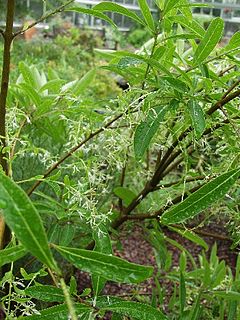
Chionanthus, common name: fringetrees, is a genus of about 150 species of flowering plants in the family Oleaceae.

Magnolia is a large genus of about 210 flowering plant species in the subfamily Magnolioideae of the family Magnoliaceae. It is named after French botanist Pierre Magnol.

Ilex, or holly, is a genus of about 480 species of flowering plants in the family Aquifoliaceae, and the only living genus in that family. The species are evergreen or deciduous trees, shrubs, and climbers from tropics to temperate zones worldwide.

The Wych Elm cultivar Ulmus glabra 'Camperdownii', commonly known as the Camperdown Elm, was discovered about 1835–1840 as a young contorted elm growing in the forest at Camperdown House, in Dundee, Scotland, by the Earl of Camperdown's head forester, David Taylor. The young tree was lifted and replanted within the gardens of Camperdown House where it remains to this day. The original tree, which grows on its own roots, is less than 3 m tall, with a weeping habit and contorted branch structure. The earl's gardener is said to have produced the first of what are commonly recognised as Camperdown elms by grafting a cutting to the trunk of a wych elm.

Westonbirt, The National Arboretum is an arboretum in Gloucestershire, England, about 3 miles (5 km) southwest of the town of Tetbury. Managed by the Forestry Commission, it is perhaps the most important and widely known arboretum in the United Kingdom.

Central Gardens is a historic Memphis neighborhood in Midtown. It has been named one of North America's best "Old House Neighborhoods."
North Oklahoma Botanical Garden and Arboretum is a botanical garden and arboretum on the campus of Northern Oklahoma College, located at 1220 East Grand Avenue, Tonkawa, Oklahoma. It is an affiliate garden of the Oklahoma Botanical Garden and Arboretum and open to the public daily without charge.
The University of Rochester Arboretum is an arboretum located across the River Campus of the University of Rochester, 612 Wilson Boulevard, Rochester, New York.

Bailey Arboretum is a 42-acre (17 ha) arboretum located in Lattingtown, New York, a small village on the North Shore of Long Island. It opened to the public on Aug. 5, 1969 after being donated to Nassau County in 1968 by the heirs of Mr. and Mrs. Frank Bailey. Through an agreement with the Village of Lattingtown, admission to the arboretum was limited to 200 people at any one time.
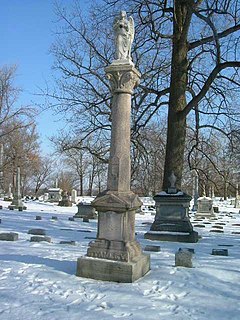
Woodland Cemetery and Arboretum, located at 118 Woodland Avenue, Dayton, Ohio, is one of the oldest garden cemeteries in the United States.

Ulmus crassifolia Nutt., the Texas cedar elm or simply cedar elm, is a deciduous tree native to south central North America, mainly in southern and eastern Texas, southern Oklahoma, Arkansas and Louisiana, with small populations in western Mississippi, southwest Tennessee and north central Florida; it also occurs in northeastern Mexico. It is the most common elm tree in Texas. The tree typically grows well in flat valley bottom areas referred to as 'Cedar Elm Flats'. The common name 'cedar elm' is derived from the trees' association with juniper trees, locally known as cedars.
Secrest Arboretum is an arboretum located on the campus of the Ohio Agricultural Research and Development Center (OARDC), at the intersection of Pine Road and Green Drive, Wooster, Ohio. It is open daily without charge and hosts an estimated 10,000 visitors each year.

Chadwick Arboretum is a 62 acres (25 ha) arboretum on the Agriculture campus of The Ohio State University, in Columbus, Ohio, United States. The main arboretum collection is located just across Lane Avenue from the Schottenstein Center with its other collections nearby. The arboretum is open daily without charge.
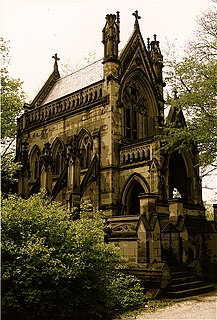
Spring Grove Cemetery and Arboretum is a nonprofit garden cemetery and arboretum located at 4521 Spring Grove Avenue, Cincinnati, Ohio. It is the second largest cemetery in the United States and is recognized as a US National Historic Landmark.
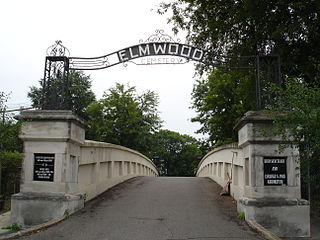
Historic Elmwood Cemetery is the oldest active cemetery in Memphis, Tennessee. It was established in 1852 as one of the first rural garden cemeteries in the South.

The North Carolina Arboretum is an arboretum and botanical garden located within the Bent Creek Experimental Forest of the Pisgah National Forest at 100 Frederick Law Olmsted Way, southwest of Asheville, North Carolina near the Blue Ridge Parkway. It is open daily except for Christmas Day. There is no admission charge, but some parking fees do apply.

Ulmus lamellosa, commonly called the Hebei elm, is a small deciduous tree native to four Chinese provinces, Hebei, Henan, Nei Mongol, and Shanxi, to the west and south of Beijing.

Thorp Perrow Arboretum is an 85-acre (34 ha) woodland garden Arboretum near Bedale in North Yorkshire, England.

Ulmus 'Louis van Houtte' is believed to have been first cultivated in Ghent, Belgium circa 1863. It was first mentioned by Franz Deegen in 1886. It was once thought a cultivar of English Elm Ulmus minor 'Atinia', though this derivation has long been questioned; W. J. Bean called it "an elm of uncertain status". Its dissimilarity from the type and its Belgian provenance make the 'Atinia' attribution unlikely. Fontaine (1968) considered it probably a form of U. × hollandica.

The elm cultivar Ulmus 'Scampstoniensis', the Scampston Elm or Scampston Weeping Elm, is said to have come from Scampston Hall, Yorkshire, England, before 1810. Loudon opined that a tree of the same name at the Royal Horticultural Society's Garden in 1834, 18 feet (5.5 m) high at 8 years old "differed little from the species". Henry described the tree, from a specimen growing in Victoria Park, Bath, as "a weeping form of U. nitens" [:Ulmus minor ]; however Green considered it "probably a form of Ulmus × hollandica". Writing in 1831, Loudon said that the tree was supposed to have originated in America. U. minor is not, however, an American species, so if the tree was brought from America, it must originally have been taken there from Europe. There was an 'American Plantation' at Scampston, which may be related to this supposition. A number of old specimens of 'Scampstoniensis' in this plantation were blown down in a great gale of October 1881; younger specimens were still present at Scampston in 1911.

The 'dwarf' elm cultivar Ulmus 'Jacqueline Hillier' ('JH') is an elm of uncertain origin. It was cloned from a specimen found in a private garden in Selly Park, Birmingham, England, in 1966. The garden's owner told Hillier that it might have been introduced from outside the country by a relative. Hillier at first conjectured U. minor, as did Heybroek (2009). Identical-looking elm cultivars in Russia are labelled forms of Siberian Elm, Ulmus pumila, which is known to produce 'JH'-type long shoots. Melville considered 'JH' a hybrid cultivar from the 'Elegantissima' group of Ulmus × hollandica. Uncertainty about its parentage has led most nurserymen to list the tree simply as Ulmus 'Jacqueline Hillier'. 'JH' is not known to produce flowers and samarae, or root suckers.
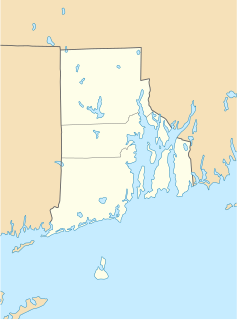
Elmwood is a neighborhood in the South Side of Providence, Rhode Island. The triangular region is demarcated by Broad Street, Elmwood Avenue, and Interstate 95.
Haywood Community College is a community college in Clyde, North Carolina. It is part of the North Carolina Community College System. Established in 1965, the college offers associate's degree programs and online courses in programs such as forestry, fish and wildlife management, and professional crafts. The college's 120-acre (490,000 m2) campus includes an arboretum, a mill pond, and a working gristmill constructed by students.





















